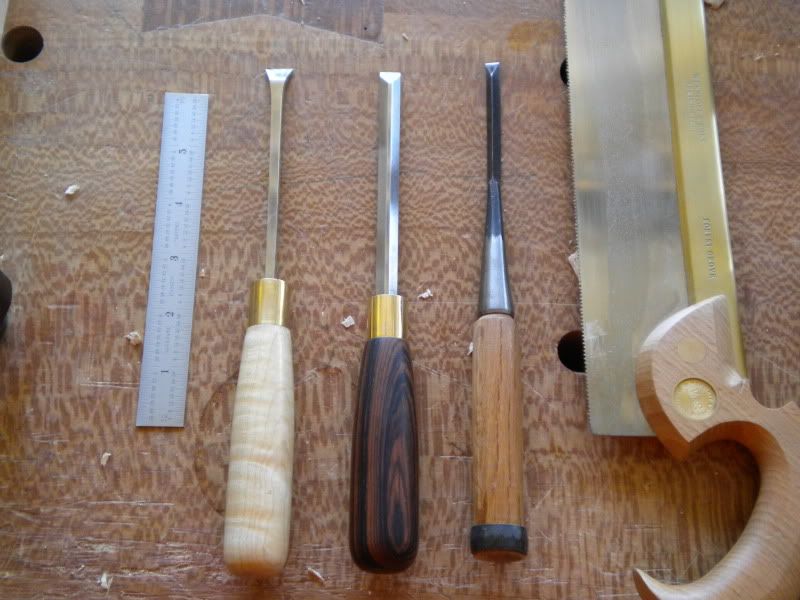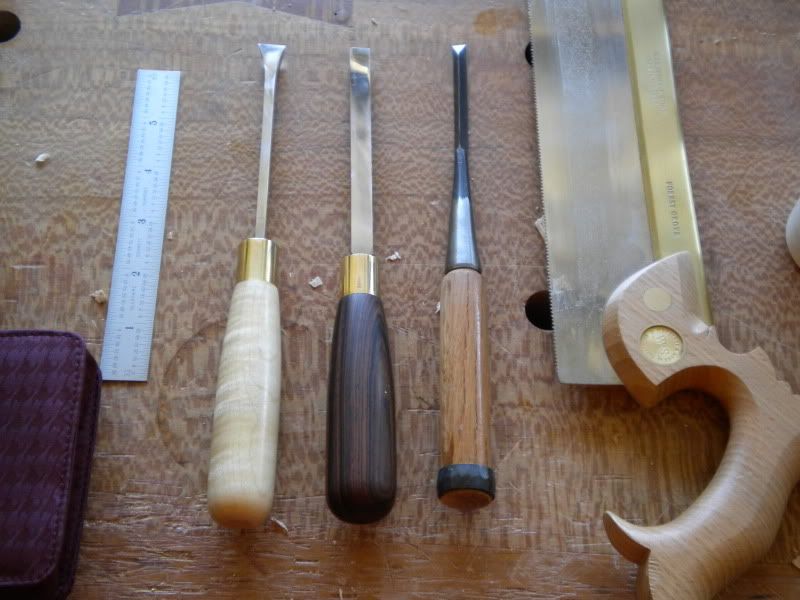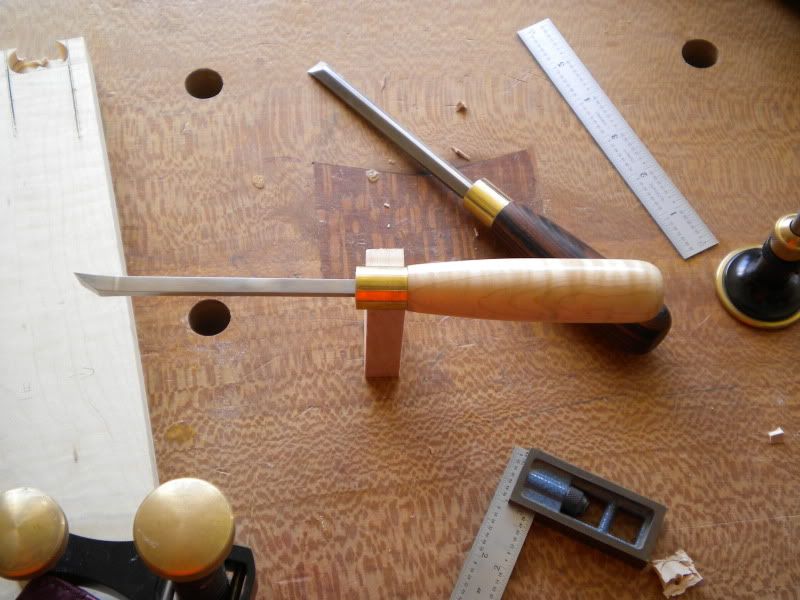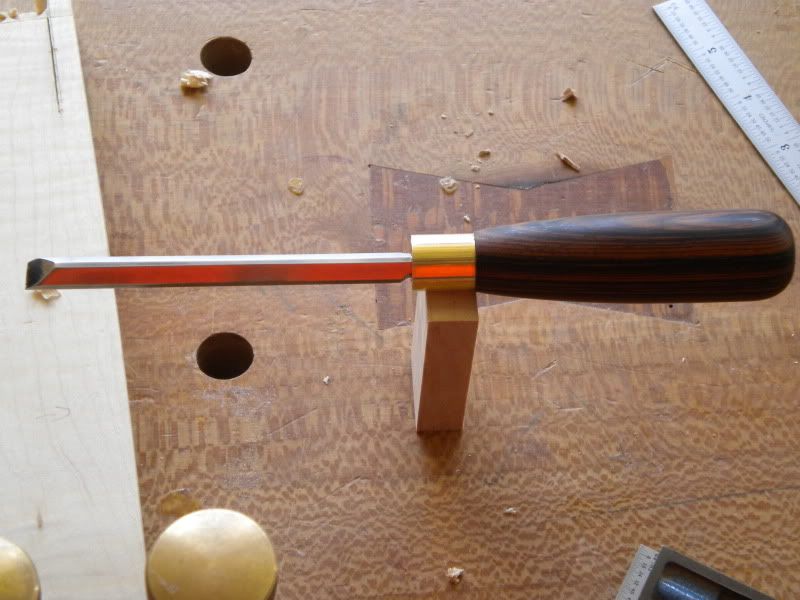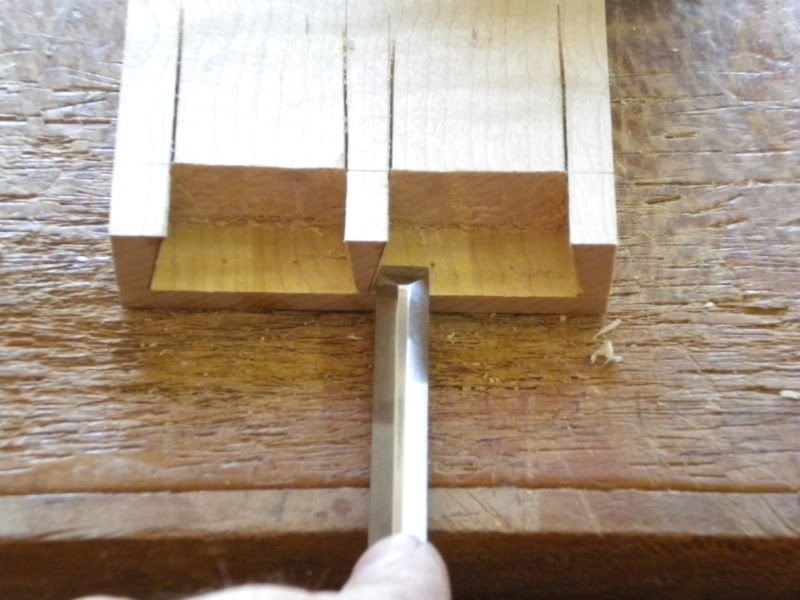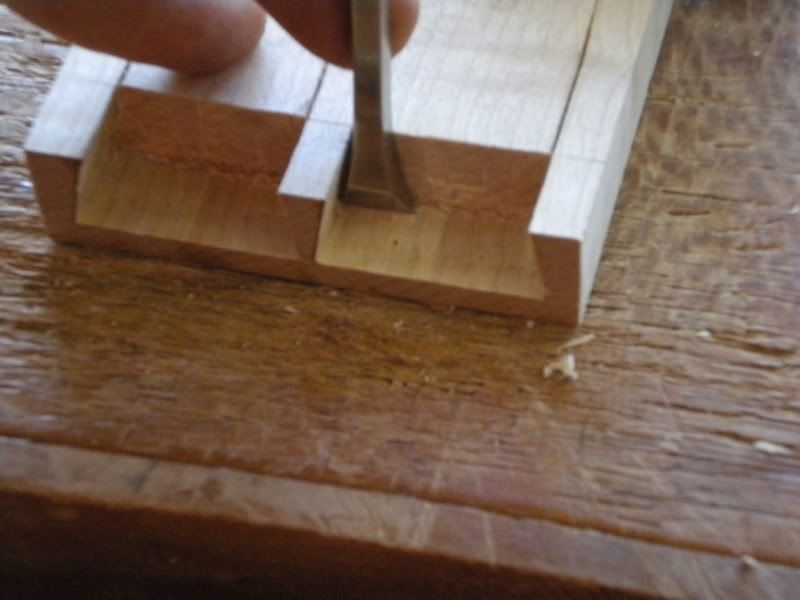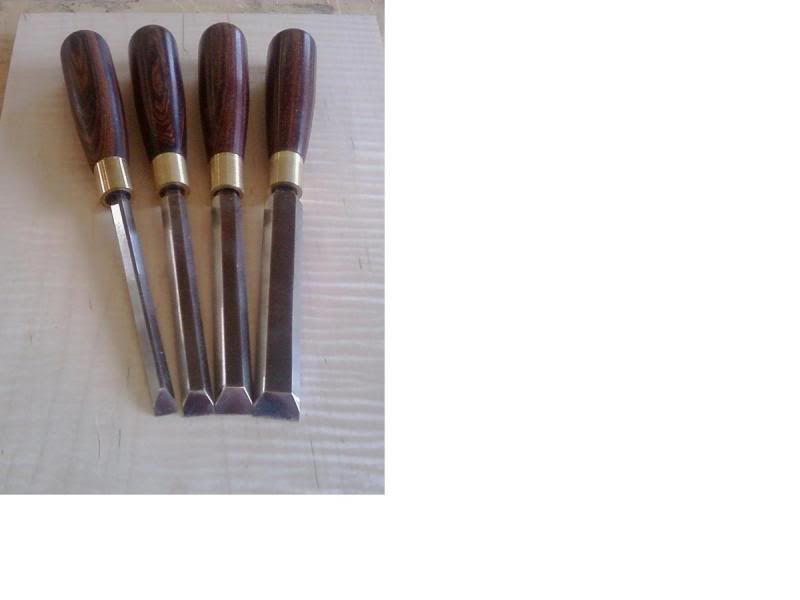Google for "Unbelievable New Chisels", as I understand that we can't link to other forums...
This sure sounds promising! Sounds like CPM 3V will find its way into more and more uses/shops with time. Also sounds like it won't be all that tough to sharpen/hone using diamond paste and that using high end stones won't cut the mustard here. Just wondering if anyone else might have comments, and why is it that woodworkers in general seem to lag behind the knife makers on this edge of the slope?...
The following is a quote on page 10 of that thread when asked: "At what bevel angle ranges and rc hardness has CPM 3V been found to work optimally at?"
Wouldn't it be fantastic to be able to have a 20° - 25° bevel for a low angle miter plane that would not chip out, and an edge that would survive many hours of end grain planing!?Originally Posted by jcav8ter




 Reply With Quote
Reply With Quote






 and those are the professionals! The average persons kitchen knives, even when they are the nicest ones, are absolutely abhorrent!
and those are the professionals! The average persons kitchen knives, even when they are the nicest ones, are absolutely abhorrent!


